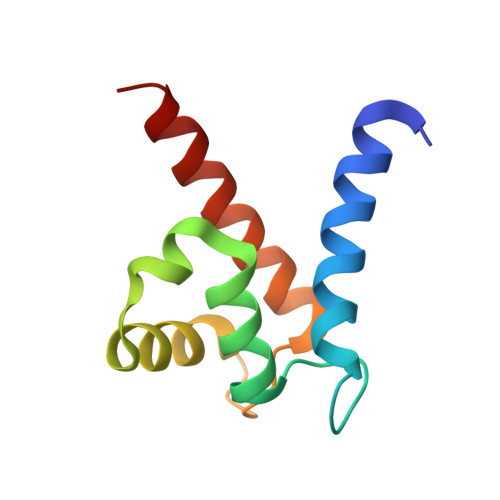Crystal structures of S100A6 in the Ca(2+)-free and Ca(2+)-bound states: the calcium sensor mechanism of S100 proteins revealed at atomic resolution.
Otterbein, L.R., Kordowska, J., Witte-Hoffmann, C., Wang, C.L., Dominguez, R.(2002) Structure 10: 557-567
- PubMed: 11937060
- DOI: https://doi.org/10.1016/s0969-2126(02)00740-2
- Primary Citation of Related Structures:
1K8U, 1K96, 1K9K, 1K9P - PubMed Abstract:
S100A6 is a member of the S100 family of Ca(2+) binding proteins, which have come to play an important role in the diagnosis of cancer due to their overexpression in various tumor cells. We have determined the crystal structures of human S100A6 in the Ca(2+)-free and Ca(2+)-bound states to resolutions of 1.15 A and 1.44 A, respectively. Ca(2+) binding is responsible for a dramatic change in the global shape and charge distribution of the S100A6 dimer, leading to the exposure of two symmetrically positioned target binding sites. The results are consistent with S100A6, and most likely other S100 proteins, functioning as Ca(2+) sensors in a way analogous to the prototypical sensors calmodulin and troponin C. The structures have important implications for our understanding of target binding and cooperativity of Ca(2+) binding in the S100 family.
Organizational Affiliation:
Boston Biomedical Research Institute, 64 Grove Street, Watertown, MA 02472, USA.
















